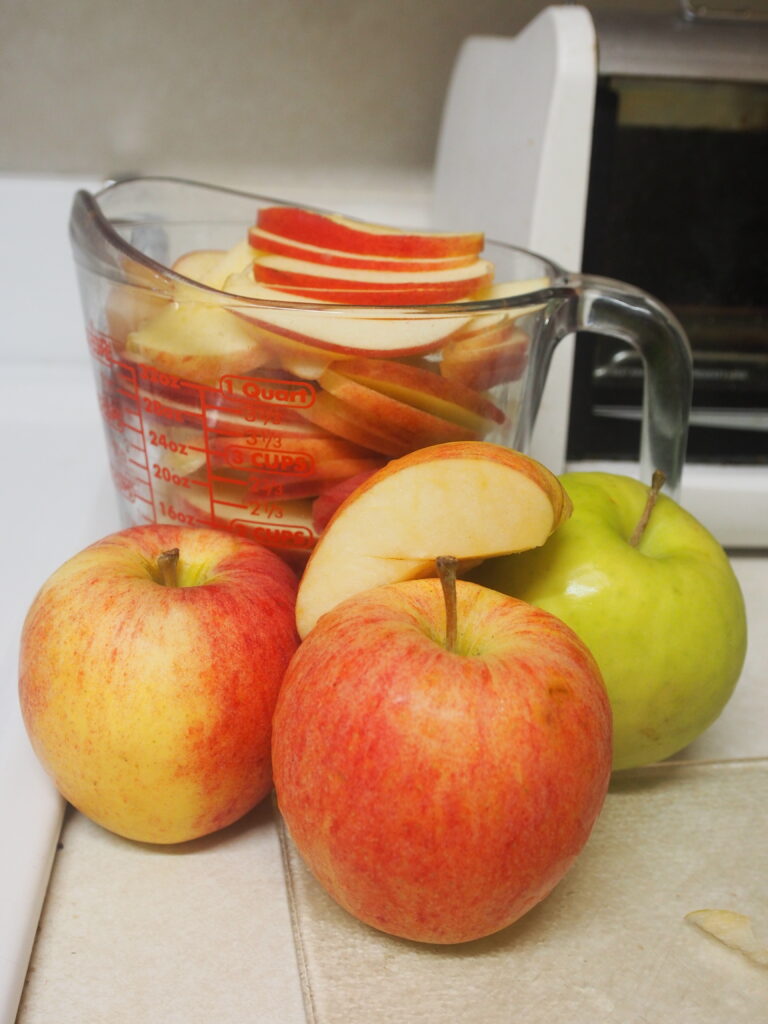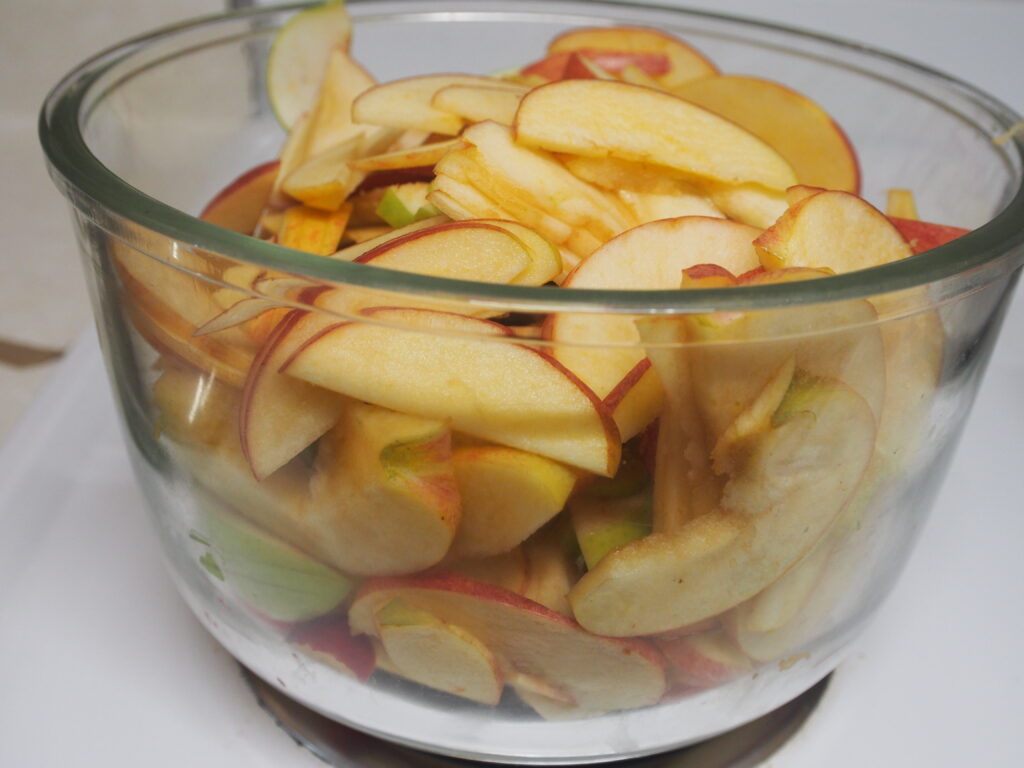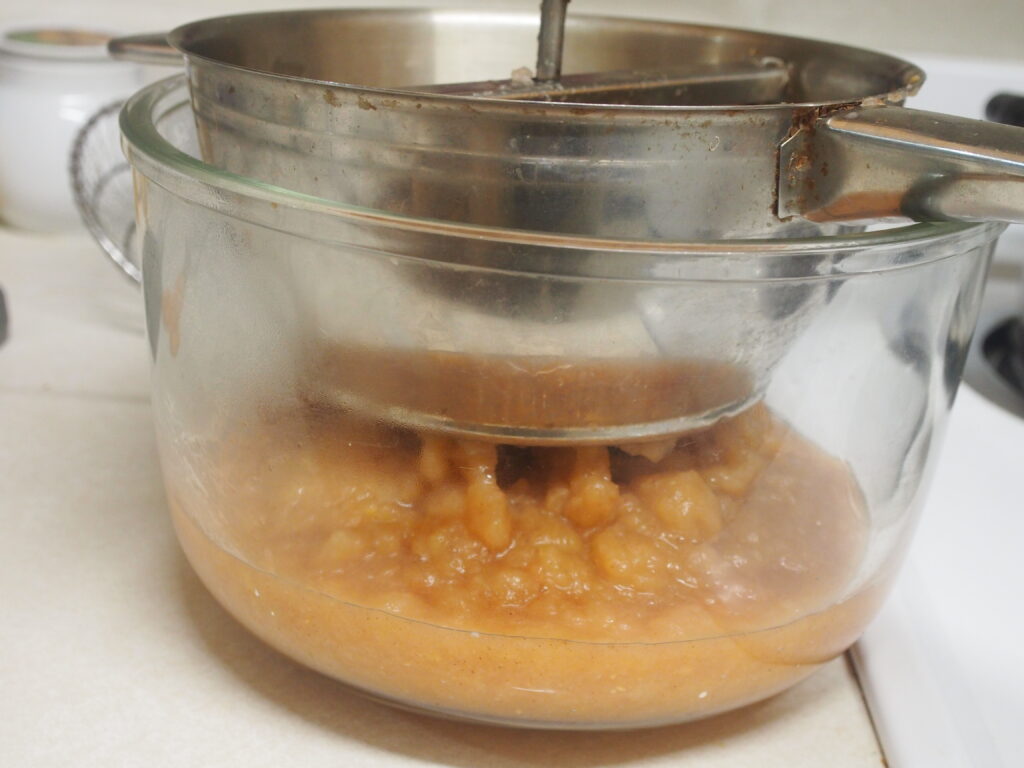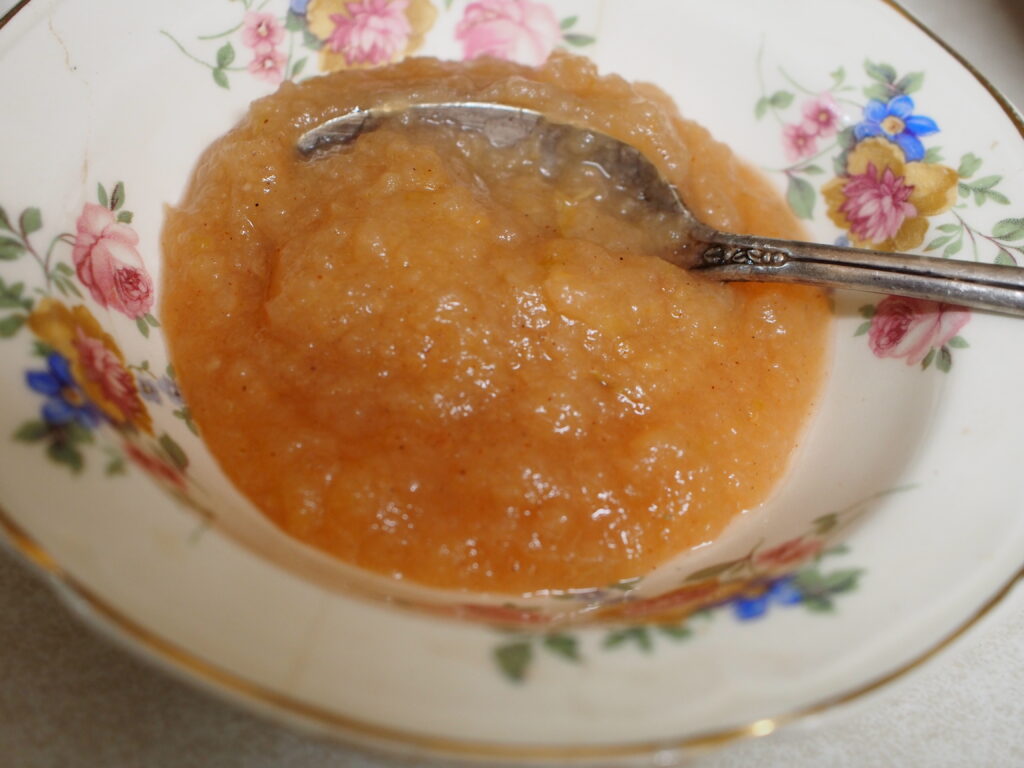
applesauce!
When I was a kid during the Mesozoic Age, my family used to brave the elements and collect apples. Do you have any idea of how difficult that was? The climate was very hot, with a terrible greenhouse effect. You were very likely to bump into an enormously large reptile. They were everywhere. Some stomped heavily on the ground, while others flew noisily. Their wingspan was……………………………..
wait, how did I end up in the 21st century, and why do things look less civilized than they did when dinosaurs roamed the earth?
Well, there’s always applesauce. So, as I was saying, before I described my…. um… childhood… if you’re given a bunch of apples, it’s fun and easy to turn them into applesauce. I usually put my sliced apples into a one-quart measuring cup. Um, measuring glass. I guess. If you don’t live in a country that’s so backwards that it won’t use the metric system for everyday things (well, except for soft drink containers and medicine), the measurement would be approximately one litre. Or is that liter? My spell Czech is saying “liter,” but I don’t know. That looks odd. Anyway, I’m off topic, which, apparently, is one of my better skills. Sooooo… back to the applesauce.


For the applesauce project, I selected a large pot, but not anywhere near as big as the stockpot I used for the bone broth. I had three quarts of apples, so I put approximately two cups of water in the pot and let that boil before adding the apples. Then I turned the heat down to medium, and I put a cover on the pot. Every ten minutes, I stirred the apples and checked to see how soft they are. Every batch of apples is different, depending on how hard or soft the apples are. Usually, I like to use three different types of apples for my applesauce. In this batch, I used mostly one type because these apples were given to me. I don’t know what type of apple they are, but I took a taste and discovered that the apples were on the sweet side. So, I added some Granny Smith apples and a bunch of little crab apples, which I picked from a tree in Beaver Island State Park.

Once the apples are soft, my next step is to add flavorings. This is where you can be creative. You can make your applesauce to taste. Sometimes, I add nothing at all, but that’s usually when I get apples from the farm. I know that they’ve been recently picked and are full of flavor. I love tart apples so I add less flavoring to applesauce dominated by tart apples. This time, I added lemon juice, sugar, lemon peel and cinnamon. The measurements are, once again, dependent on taste. I’m not that fond of sweetness so I add less sugar and more lemon juice.
After adding the flavorings and stirring them in, with the pot cooking at a low temperature, I put the apples through a food mill, which gets rid of the apple peel and any remaining seeds. I prefer to cook my apples with the peel. It’s less work to avoid peeling the apples and, in addition, the peel adds a lovely color to the applesauce. Also, there are a lot of vitamins in the apple peel, and it’s nice to make food nutritious and delicious.

Ok Alice, This looks so good! Beside the nice color apple peals give, it’s also a great source of fiber. When can I come over for applesauce!
You’re always invited!!!
That look so good and I can almost smell it! It doesn’t seem hard to make, the only think I don’t have a food mill. Maybe I can find one at a garage sale!
You never know what treasures you might find at a garage sale! Maybe I should write a blog post about garage sales!
Alice, I love your recipe. I never thought of putting several kinds of apples in together, for a batch of applesauce. Sounds delicious. I don’t have a food mill, and I like the texture of pieces of peel. So I just cook the apples down, sometimes using apple juice to simmer, and mash them with a hand potato masher. I suppose we could peel the apples and then put the peels through a blender, in apple juice. Then we would have all the flavor, nutrition, and fiber. We shall see if I bother to do that. 🙂 Thanks for the inspiration!
You’re welcome!!!
When I make pear-applesauce, I cook it all down in apple cider, and I find that I don’t need to add any other flavors. It’s not quite pear season yet. Will probably write a future blog post about making stuff with fresh pears and apples.
Nice job – I love anything apple/cinnamon!
When my boy just started eating solids, I used to make lots of apple sauce and kept little jars in the freezer.
In Switzerland we have a cherished “olden day dish” we call “Ghackets & Hörnli mit Öpfelmues”, that’s Swiss German for ground beef, macaroni and apple sauce.
PS: Litre = British English, Liter = American English
“Ghackets & Hörnli mit Öpfelmues”… that sounds good. I wonder if I could eat that because I have a gluten intolerance, but I’ve heard that bread and pasta in Europe is easier to digest than the American version!
As for the little jars in the freezer, what a great idea!
As a matter of fact just the other day I watched a YouTube video of an American who reported that while gluten is giving him a super hard time back in the US, the bread and pasta he’s been eating in Europe, specifically Italy, was easier to digest. He thinks it has to do with the way the wheat is planted and treated with products.
That’s interesting. Gluten problems are, apparently, very common in the United States. I think there’s also issues with the types of wheat planted and then, the fact that so much of it is GMO. But I’m not a scientist so I don’t really know.